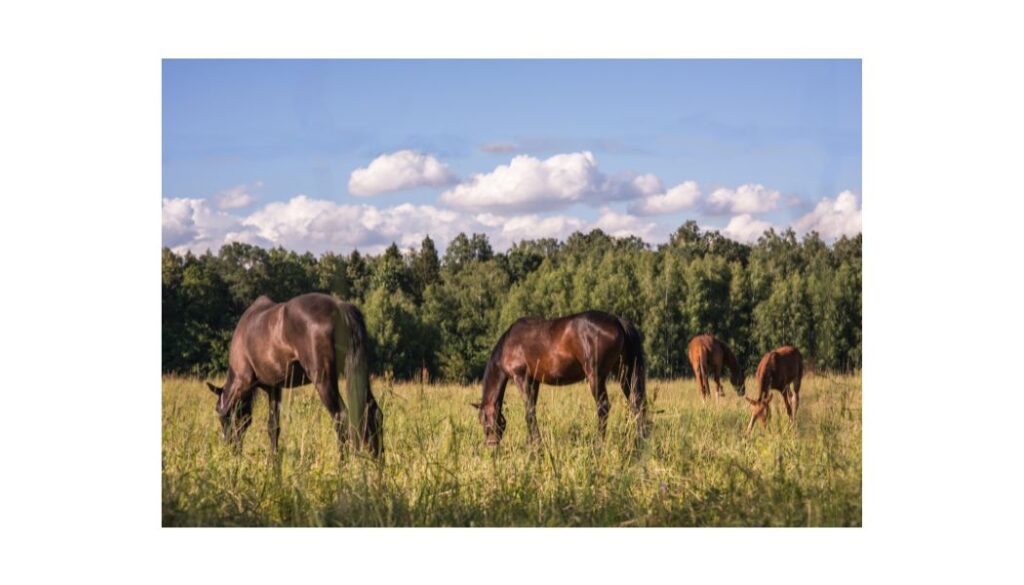
By Donna Cecil
Have these last couple weeks of cooler weather sparked that winter readiness panic? Do you have enough hay squirreled away to get you through those “heavy hay feeding” cold winter months?
I like to have about 1,800 to 2,000 small square bales of hay put away for our six “senior” horses for the year. Yes, I know that is five to six bales per day. Our horses come off their “outdoor” pastures November through April and enjoy their daily turnout in their “indoor” pasture, the indoor arena, where hay is spread all around for them to walk and graze. Are you thinking, OMG? Well, you’re not alone – I can’t even begin to tell you the crazy looks I get when I talk about our horses’ feeding schedule, especially in the winter months. It’s at that point that I feel compelled to explain a horse’s digestive system …
Horses originally evolved to graze all day on wide-open plains. As with all “grazers” they need to continue to take in to push out! Unfortunately, as horse care modernized and cities spread out into the country, horses have had to adapt to smaller spaces and larger meals fed only a couple times a day. Even if done properly, this can sometimes lead to the development of ulcers or even colic.
Equine ulcers happen when the lining of the stomach erodes due to prolonged exposure to the stomach’s acid, according to the American Association of Equine Practitioners. Colic occurs when food sits too long in the gut and becomes impacted. How can you prevent either of these problems, by being proactive … feed smaller more frequent meals.
The horse’s stomach cells constantly secrete hydrochloric acid, so long periods between feedings, especially of high-concentrate diets, can result in an acidic environment within the stomach and destroy the stomach lining, that’s the perfect setup for ulcers to form or a gut to become impacted.
Feeding multiple, smaller meals throughout the day, can help keep saliva production increased to counteract the acid production by providing a barrier between the acid and stomach lining. Basically, the act of eating itself stimulates saliva amounts, which counteracts the acid. All you need to remember is that saliva production and the ingestion of roughage (i.e. hay) help to create an acid barrier.
Call me crazy, but I must be doing something right AND it works for our horses:
- We make sure that our horses always have access to fresh, clean water but we encourage drinking in the winter months with warm water.
- We grain morning and evening but more frequently (additional lunch and midnight) for our late 20’s and 33, 34 year old equine partners.
- Hay is thrown a minimum of five times per day, about every three to four hours, between 7:00 AM and Midnight. If it’s bitter cold, the flakes will be heavier.
And finally, NEVER underestimate the importance of the “night check”! This is the time when you need to refill water buckets, throw that last big flake of hay and visually observe each horse to be sure that they ALL are comfortable … this is called being proactive!